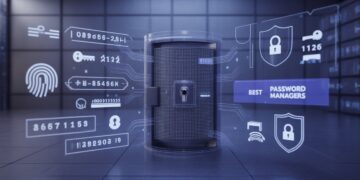End-to-end encryption (E2E) is a secure communication mechanism that protects encrypted data as it travels from source to destination. Only the sender and recipient can read the data because it is encrypted on one end and decrypted on the other.
If you use end-to-end encryption, no one in the middle, be it an Internet service provider, an application service provider, or a hacker, can read or interfere with it.
We have end-to-end encryption because privacy and security are in our DNA.
End-to-end encryption protects your messages, photographs, videos, voice communications, documents, status updates, and phone conversations from prying eyes.
How E2E encryption Works
End-to-end encryption encrypts data on the sender’s system or device so that only the recipient can decrypt it. The user starts the encryption from a source device in this encryption. The cryptographic keys used to encrypt and decrypt the communications are only held on the endpoints, thanks to the usage of public-key encryption.
Although utilising known techniques and currently available computing power, the key exchange in this situation is considered unbreakable, there are at least two potential flaws outside of the mathematics. This also gives the user more options when it comes to picking which data to encrypt.
E2EE was developed as a method of communication that prevents eavesdroppers from listening in on a discussion. Even if the data is somehow intercepted on the way from one “end” to another “end”, it will make no sense to the eavesdropper (usually referred to as “man-in-the-middle” or MITM) because it is encrypted.
Advantages of End-to-end encryption
There are several advantages of End-to-end encryption (E2E) over the standard encryption:
- The packet data in the hop computer on the network does not require a separate key for decryption.
- It protects your personal information. If you use Gmail, Google has access to all of the personal information you include in your emails, and it can save them even if you delete them. You may choose who reads your messages with E2EE.
- The option to select specific configurations aids in more functionality modularization.
- End-to-end encryption uses fewer resources and takes less time, and the file size is usually modest.
- Encrypting data with the help of specific setups can aid in the end-to-end encryption (E2EE) process’s modularization.









